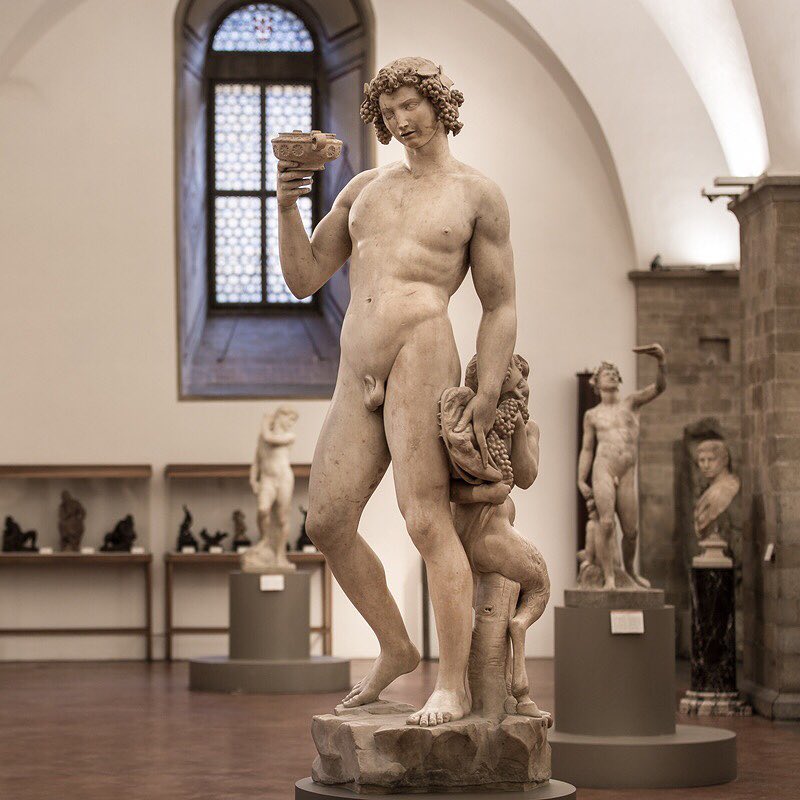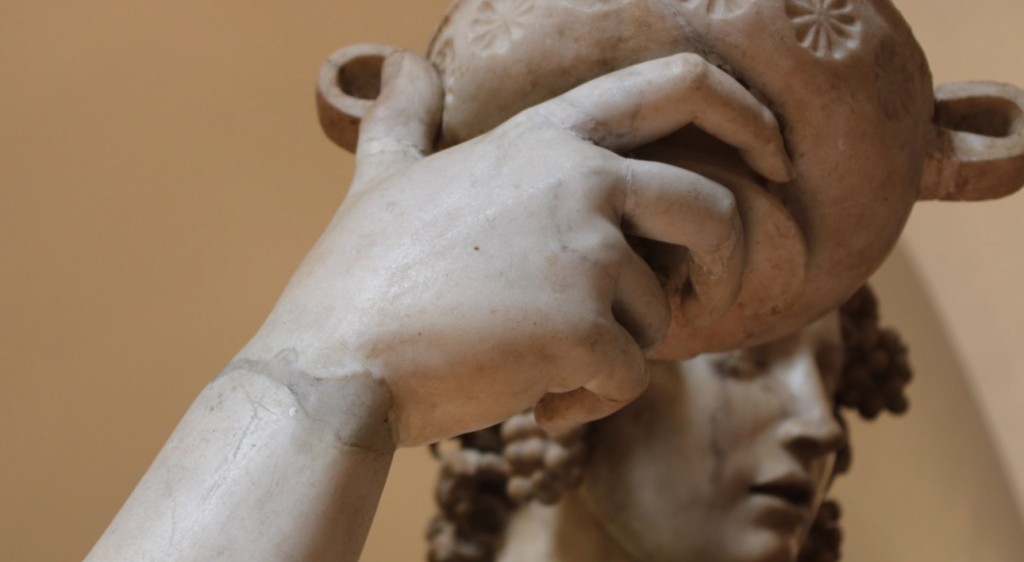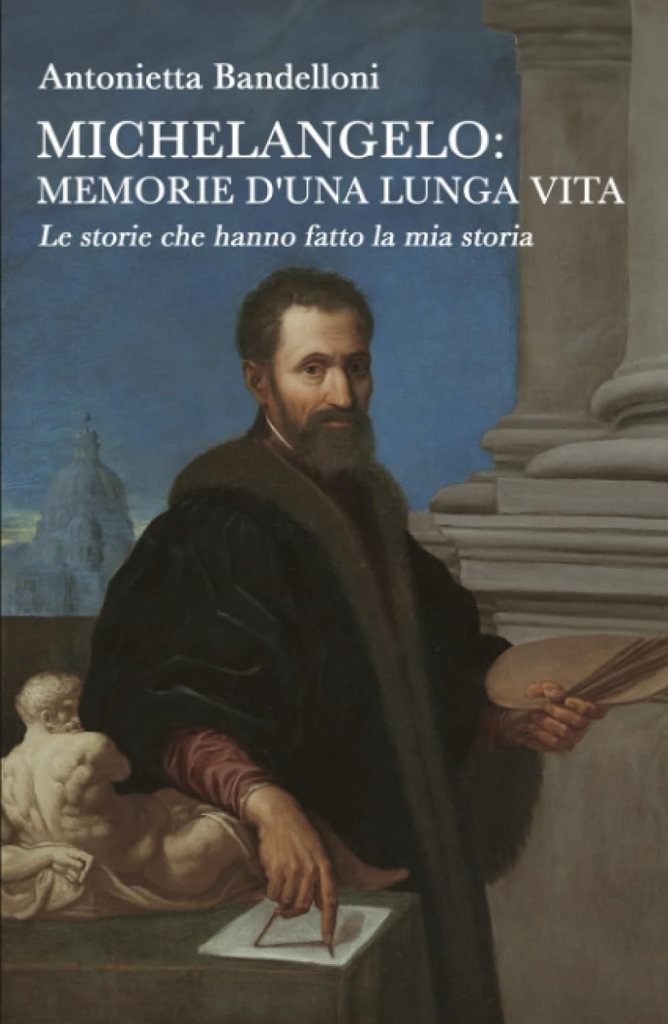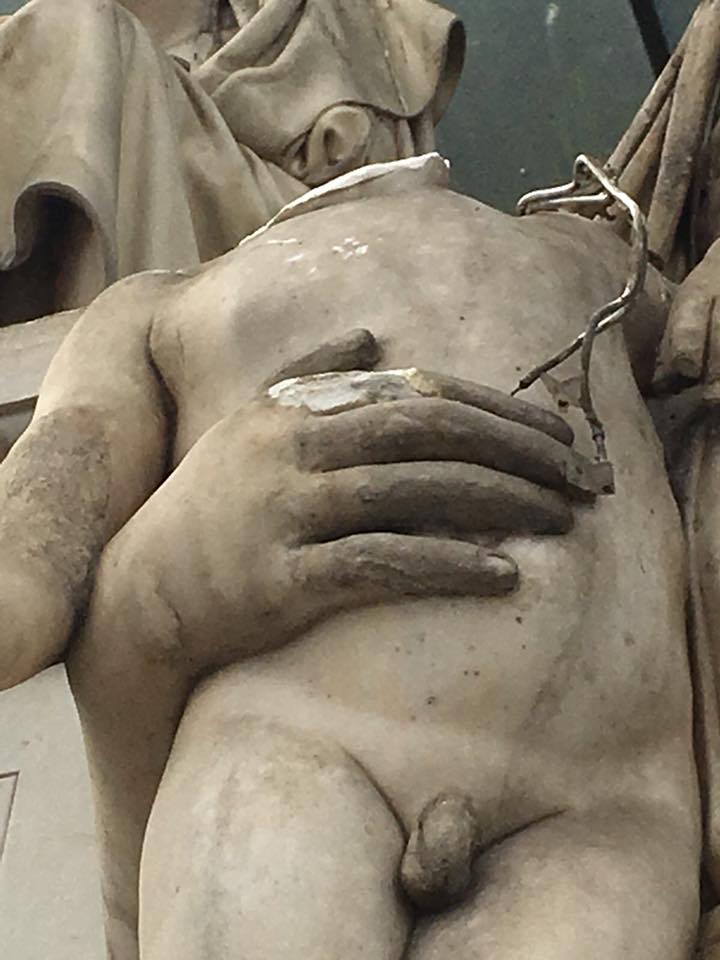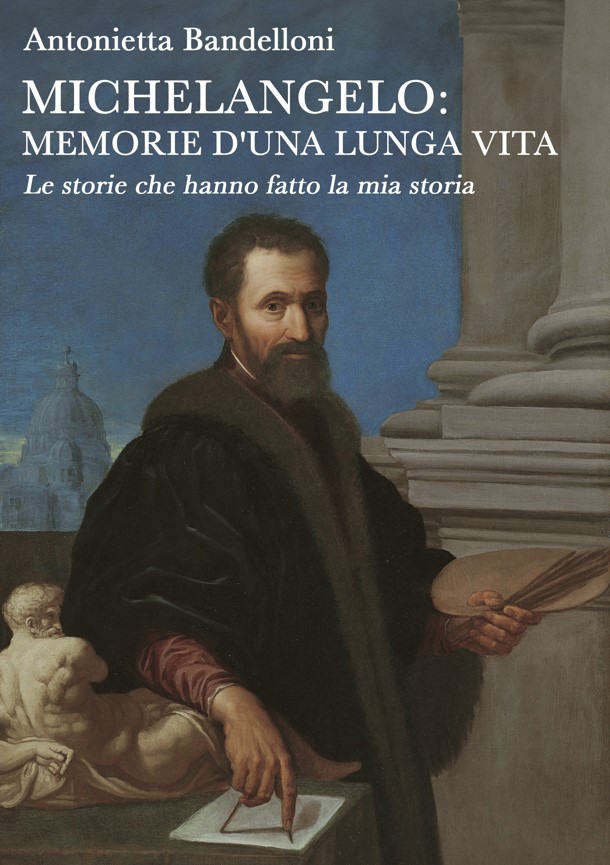Un Bacco pagano nel Palazzo del camerlengo?
Era il 1496 quando Raffaele Riario mi commissionò il Bacco: la prima opera che scolpii in terra romana.
In quel frangente la facciata del suo nuovo Palazzo della Cancelleria era terminata ed erano stati avviati i lavori per la realizzazione del cortile.
Bacco, che gli dei chiamavano Dioniso, non solo era il dio del vino e delle orge ma anche il protettore del teatro. Come ipotizza Frommel, non è da escludere il committente l’avesse voluto per collocare al centro del cortile, dove poi sarebbero state messe in scena, durante occasioni particolari, vere e proprie rappresentazioni teatrali.
Anche se fosse stato messo in posizione centrale, la grandezza del cortile avrebbe comunque accolto un palco di rispettabili dimensioni.
Fatto sta che quando nel 1506, il cortile era praticamente ultimato o quasi, il Bacco ancora era ubicato nell’atrio del palazzo del Jacopo Galli, il banchiere del cardinale Riario oramai morto l’anno precedente.
Come è noto il Galli m’aveva accolto a casa sua quando arrivai a Roma e lì rimasi almeno un anno, scolpendo prima il Bacco e poi il Cupido, oggi al Metropolitan di New York.
Durante i quattro anni di esilio da Roma del cardinale, il Bacco non si mosse da casa del Galli che si occupò di far proseguire i lavori di edificazione del Palazzo della Cancelleria durante la sua assenza.
Perché la scultura poi non fu trasferita nel cortile del Galli? Molto probabilmente perchè non sarebbe stata ben vista quell’opera pagana in casa del cardinale camerlengo.
Per il momento il sempre vostro michelangelo Buonarroti vi saluta dandovi appuntamento ai prossimi post e sui social.
A pagan Bacchus in the camerlengo’s palace?
It was 1496, when Raffaele Riario commissioned Bacchus from me: the first work I sculpted on Roman soil. At that time the façade of his new Palazzo della Cancelleria was finished and work on the construction of the courtyard had begun.
Bacchus, whom the gods called Dionysus, was not only the god of wine and orgies but also the protector of the theater. As Frommel hypothesizes, it cannot be ruled out that the client wanted it to be placed in the center of the courtyard, where actual theatrical performances would then be staged on special occasions.
Even if it had been placed in a central position, the size of the courtyard would still have accommodated a stage of respectable size.
The fact is that when in 1506, the courtyard was practically completed or almost, the Bacchus was still located in the atrium of the banker Jacopo Galli, the banker of Cardinal Riario who had now died the previous year. As is known, Galli welcomed me into his house when I arrived in Rome and I stayed there for at least a year, sculpting first the Bacchus and then the Cupid, now at the Metropolitan in New York.
During the cardinal’s four years of exile from Rome, Bacchus did not move from Galli’s house who took care of continuing the construction work on the Palazzo della Cancelleria during his absence.
Why wasn’t the sculpture moved to the Galli courtyard? Most likely because that pagan work would not have been well received in the house of the cardinal chamberlain.
For the moment, your always Michelangelo Buonarroti greets you and will meet you in the next posts and on social media.

Sostienici – Support Us
Se questo blog ti piace e ti appassiona, puoi aiutarci a farlo crescere sempre più sostenendoci in modo concreto condividendo i post, seguendo le pagine social e con un contributo che ci aiuta ad andare avanti con il nostro lavoro di divulgazione. . ENGLISH: If you like and are passionate about this blog, you can help us make it grow more and more by supporting us in a concrete way by sharing posts, following social pages and with a contribution that helps us to move forward with our dissemination work.
10,00 €

